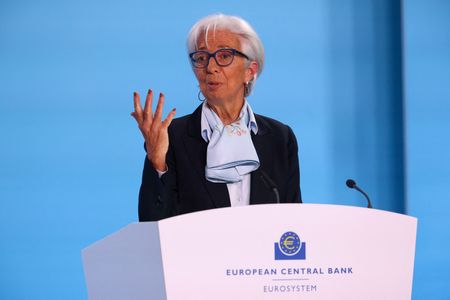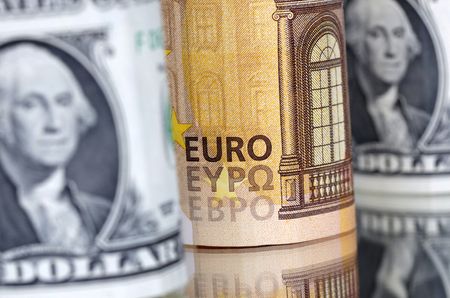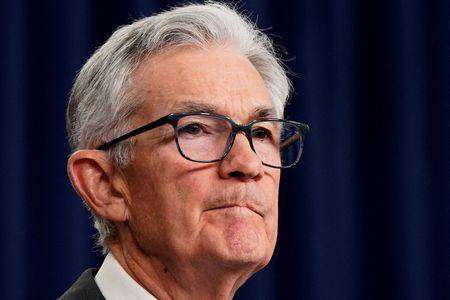By Naomi Rovnick and Alun John
LONDON (Reuters) – Big central banks have ended their historic monetary tightening cycle but predictions about who will cut rates next, and how deeply, are diverging fast.
Markets, that a month ago expected coordinated easing in June, have been thrown into disarray as Wednesday’s hot U.S. inflation pushed forecasts for the first Federal Reserve cut out to September.
The European Central Bank has signalled it will soon call time on its battle with inflation, while Australia and Norway have more to worry about.
Here’s how big central banks stand:
EARLY CUTTER
1/ SWITZERLAND
The Swiss National Bank cut rates by 25 bps to 1.50% in March, a surprise move that has helped send the franc to 10-month lows against the euro.
It was the SNB’s first rate cut in nine years and with inflation having stayed within its 0-2% target range for months, traders expect another quarter point rate at the SNB’s June 20 meeting.
COULD BE NEXT
2/ SWEDEN
Sweden’s central bank left its key rate steady at 4% in March and signalled that if inflation keeps falling towards toward its 2% target a series of rate cuts might start in May.
Markets view a Riksbank cut on May 7 as a coin toss after Governor Erik Thedeen warned a weaker Swedish crown could push inflation higher.
3/ EURO ZONE
The ECB on Thursday left rates steady as expected but sent its clearest signal yet that is preparing to cut as inflation nears its 2% target.
With the euro at a two-month low of around $1.07, some analysts believe a weak currency along with higher oil prices will deter the ECB from cutting too deeply.
Traders see a two-thirds probability of a first cut in June, with 75 bps worth of easing in total priced in by year-end.
4/ CANADA
The Bank of Canada left rates unchanged at 5% on Wednesday but gave strong clues it was ready to ease.
Money markets fully price in a July rate cut, with almost 50% odds of a move in June.
The BoC downgraded its 2025 economic growth forecast from 2.4% to 2.2% and said inflation would hit its target next year.
IN THE MIDDLE
5/ BRITAIN
The BOE kept rates at a 16-year high of 5.25% in March, with governor Andrew Bailey saying the economy was “moving in the right direction” for cuts.
But BoE policymakers are divided over when to loosen monetary conditions. Traders expect the BoE will start lowering borrowing costs by August.
6/ NEW ZEALAND
After the Reserve Bank of New Zealand held its cash rate at a 15-year high of 5.5% on Wednesday, investors stuck to their bets for an August cut.
Following 525 bps of hikes since October 2021, New Zealand has entered a technical recession.
LATER STILL
7/ UNITED STATES
The Fed has kept rates in the 5.25% to 5.5% range since July 2023 and in March reaffirmed its forecast for three 25 bp cuts this year. But traders now expect the central bank to cut by far less than it said it would just a month ago.
That’s because of Wednesday’s hot March inflation data. Money markets now price just 42 bps of cuts for 2024, with the first most likely in September.
Hours before that report, which followed strong U.S. jobs data, traders expected 67 bps of Fed cuts this year with 50-50 odds of a first move in June.
8/ AUSTRALIA
The Reserve Bank of Australia held rates at a 12-year high of 4.35% in March as the economy slowed.
Investors are debating whether the RBA will hike again, as tax cuts and a tight jobs market threaten to boost inflation. Markets expect just 20 bps of easing this year and the RBA to stay on hold until November at least.
9/ NORWAY
Norway’s central bank left rates unchanged at 4.50% in March and Governor Ida Wolden Bache predicted just one cut this year, with markets pricing it as most likely for November.
Inflation eased more than expected in March, to 3.9%, but risks rising again because of strong wage growth and a brightening economic outlook.
FOREVER THE OUTLIER
10/ JAPAN
The Bank of Japan continues to plough its own furrow. It has ended eight years of negative rates, taking borrowing costs up to a range of 0-0.1%, and abandoned yield curve control — where it purchased Japanese government bonds to ease financial conditions.
The yen is still flailing, however, trading close to a 34-year low against the dollar. BoJ Governor Kazuo Ueda has ruled out using rate hikes to support the currency. The April 25-26 BOJ meeting should provide further clues about its next move.
(Reporting by Naomi Rovnick and Alun John. Graphics by Kripa Jayaram, Pasit Kongkunakornkul, Riddhima Talwani, Sumanta Sen and Vineet Sachdev; Editing by Dhara Ranasinghe and Alison Williams)



